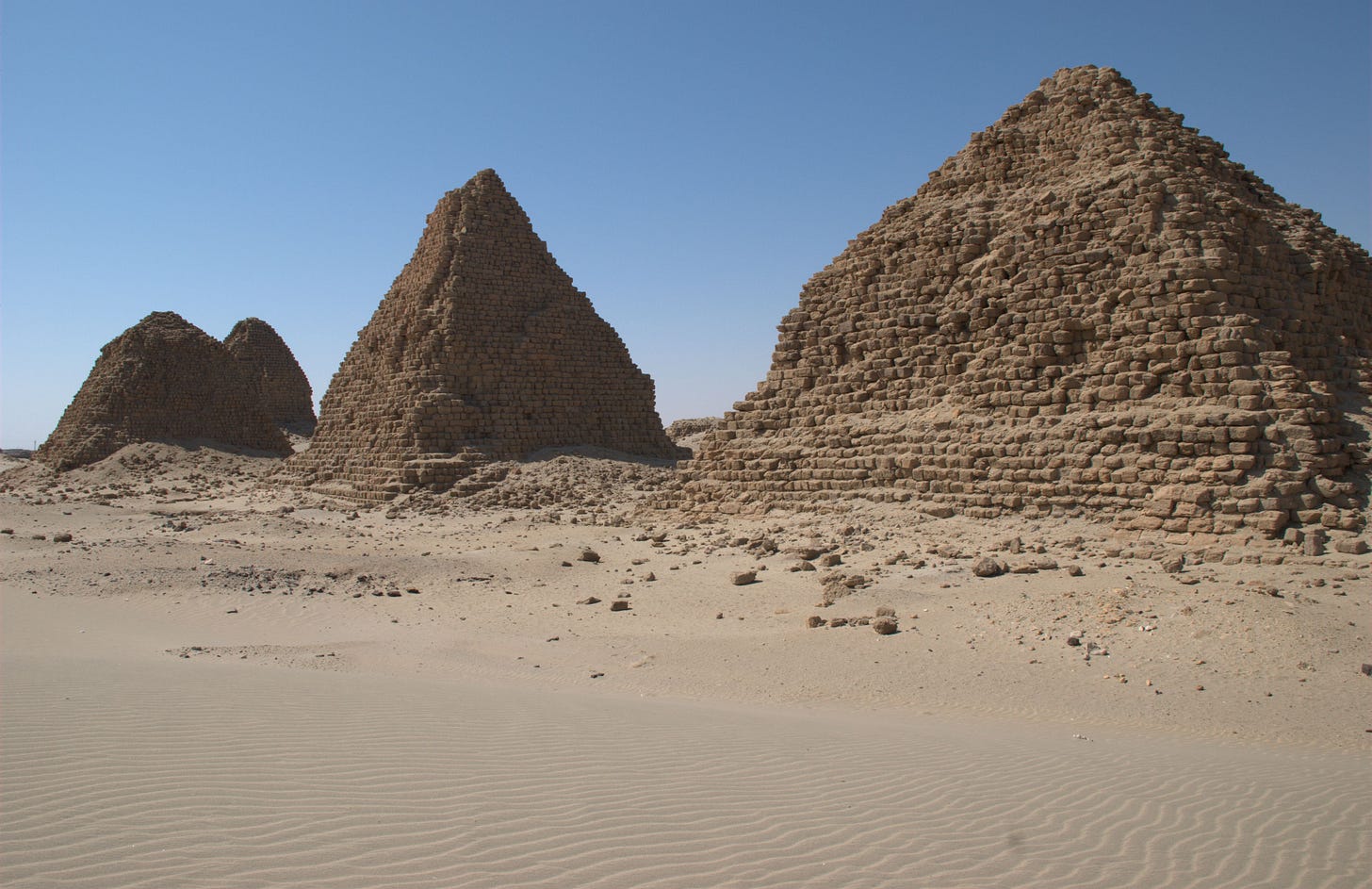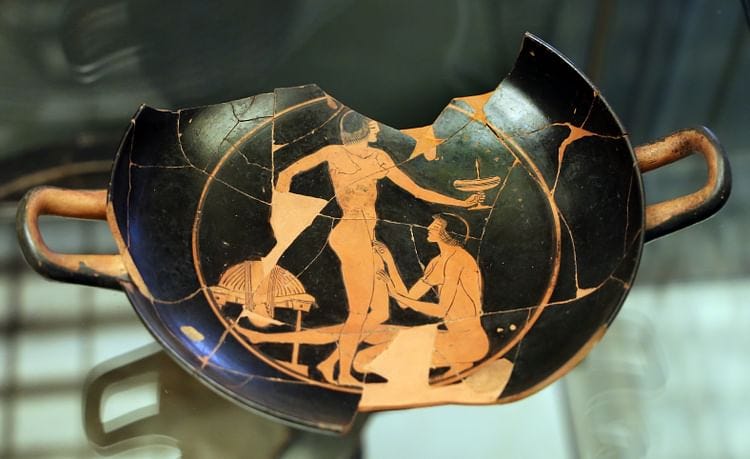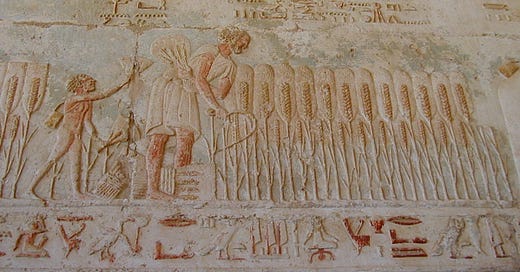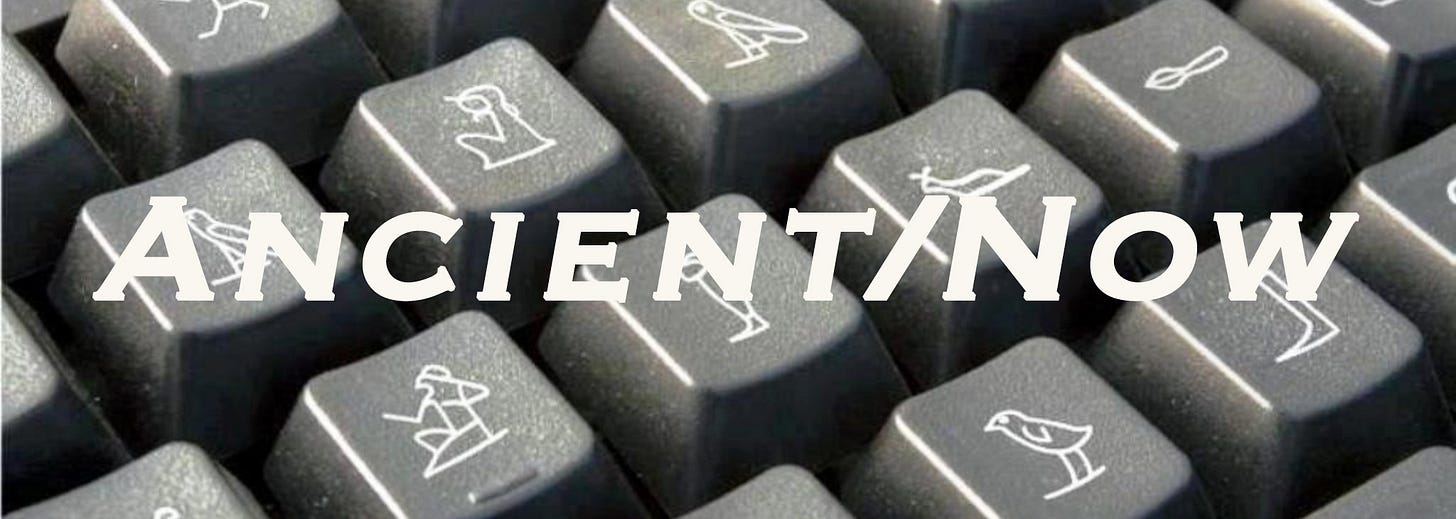Ancient/Now - June 12th
A Dutch archaeological team is banned from Saqqara, modern reception and ownership of Cleopatra, new research reveals blood disorders in ancient Egyptian children, and more
Egypt blocks Dutch archaeological team over “Afrocentric” museum exhibition
In a disturbing, though not unexpected, retaliatory move, Egyptian authorities have banned a Dutch archaeological team from conducting excavations at Saqqara—a dig they have run since 1975—over the Rijksmuseum van Oudheden’s “Kemet: Egypt in Hip Hop, Jazz, Soul & Funk” exhibition, which Egyptian antiquities authorities say falsifies history and promotes Afrocentrism. So what is this exhibition that the Egyptian government so vehemently objects to about? CNN reports,
Weijland [director, Rijksmuseum van Oudheden] went on to say that the aim of the “Kemet” exhibition is “to show and understand the depiction of ancient Egypt and the messages in music by black artists,” as well as to “show what scientific, Egyptological research can tell us about ancient Egypt and Nubia.”…
According to its web page, the exhibition, which opened in April and runs until September 3, “embarks on a journey through music history” and looks at “the influence of ancient Egypt and Nubia…in the works of a multitude of musicians of African descent, including icons of jazz such as Miles Davis and Sun Ra and contemporary artists such as Beyoncé and Rihanna.”
Attempting to clarify the exhibition’s content and its purpose, the RMO added a statement to its website, saying in part that the ancient Egyptian and Nubian objects displayed highlight and contrast elements in the music featured in the show. In other words, it’s a museum exhibition that does precisely what any quality museum exhibition should do—present art and history alongside each other in an innovative way to inspire thoughtful, creative dialogue between art, artifacts, and visitors. CNN continues,
The museum encouraged visitors to “visit the exhibition and form their own opinions,” saying it “welcomes respectful dialogue on the cultural heritage of Egypt and Nubia.”
Based on the comments of the Egyptian authorities that have been made public, it is clear that the “Kemet” exhibition has them bristling precisely because it places ancient Egyptian artifacts in conversation with modern Black culture. Egyptian reaction to the exhibition, going so far as to ban the Dutch archaeological team, underscores the threat that the current nationalism in Egypt poses to the decades-long international partnerships in the research, archaeology, and preservation of its cultural heritage.
The irony is, as with the Netflix Queen Cleopatra docu-drama, by objecting so vocally to an exhibition they so strongly dislike, Egyptian authorities have ensured that it will get far more publicity and attention than it would have had otherwise, opening themselves up to further international criticism for authoritarian retaliatory behavior. All of this makes us ask: what is Egypt’s connection to Africa—beyond the obvious continental connection—and are we even allowed to talk about it with nuance and respect? And how much of their souls are some Egyptologists willing to lose to work with nationalism that relies on a particularly white-washed view of its antiquity?
[Note: For more on the topic of Egyptology and issues of (post)colonialism and hypocrisy, see Claus Jurman’s article, “Pharaoh’s new clothes. On (post)colonial Egyptology, hypocrisy, and the elephant in the room.”]
NEW Episode—Reception, ownership, and race: Netflix’s Queen Cleopatra
You didn’t think we would let this conversation go without participating, did you? In the latest episode of Afterlives of Ancient Egypt, special guests Dr. Katharine Blouin and Dr. Heba Abd el Gawad join Kara and Jordan for a conversation about Netflix’s docu-drama Queen Cleopatra. But really we hardly talked about that documentary. Instead we discussed all the ways in which modern issues of reception, ownership, and race have played into how Cleopatra, and ancient Egypt, is seen today. Dr. Abd el Gawad brings her nuanced perspective as a scholar and an Egyptian to the discussion, and Dr. Blouin helps us access the deep-cuts of imperialism, Orientalism, and patriarchy woven into Cleopatra’s narratives. History is not dead; nor is it apolitical. History’s ghosts form our present(s). This podcast episode is a must-listen.
Study suggests blood disorders were common in ancient Egyptian children
This year a study of the mummified remains of 21 children aged 1 to 12-14 years published in the International Journal of Osteoarchaeology suggests that blood disorders like anemia may have been common in ancient Egyptian children. Dating from the Old Kingdom (third millennium BCE) to the Roman Period (fourth century CE), CT scans of the mummified remains enabled researchers to detect signs of anemia present in the bones. As LiveScience reports,
In one of the seven cases with thickened cranial vaults, a 1-year-old boy showed cranial signs of thalassemia, an inherited blood disorder that can cause mild to severe anemia due to reduced hemoglobin production; other symptoms of thalassemia can include inadequate and unusual bone growth and an increased risk of infections, according to Johns Hopkins Medicine. The boy also had an enlarged tongue and a condition known as "rodent facies," which is an abnormal growth of the cheekbones and an elongated skull. This boy's severe anemia, compounded with other difficulties, likely caused his death, the researchers theorized.
This study offers further information on the prevalence of childhood mortality in antiquity—because surviving the first three to five years of life, let alone making it to adulthood, was difficult in an era when limited medical treatments were available and in which malnutrition, disease, bacterial infections, intestinal parasites, and more were a harsh reality of daily life. LifeScience continues,
It's unclear how these ancient children came to have anemias, but the disorder can be caused by malnutrition, iron deficiency in pregnant mothers, chronic gastrointestinal issues and bacterial, viral or parasitic infections, all of which are thought to have been prevalent in ancient Egypt, the researchers said.
It’s not clear if we are to lay the blame on a simple diet of bread and beer or gestational deficiencies or bodies filled with parasites taking up all the nutrients or Roman exploitation of people, but one thing is clear: life wasn’t easy for most ancient Egyptian people. Ancient Egyptian existence should not be romanticized or fetishized as a perfect origin story; everything has its dark underbelly. For more on sickness and healing in ancient Egypt, listen to Kara and Jordan’s conversation on the topic in Episode #55 of Afterlives of Ancient Egypt on Apple Podcasts or Spotify.
25th Dynasty exhibition now on view at The High Museum of Art

“Ancient Nubia: Art of the 25th Dynasty from the Collection of the Museum of Fine Arts, Boston,” a new exhibition open at the High Museum of Art, features artifacts from the 25th Dynasty (8th century BCE)—a time when Nubian kings conquered and ruled Egypt within their larger imperial territory. The exhibition explores the “mutual influence” ancient Nubia and Egypt had over each other’s cultures. The complex relationship between these two cultures is often perceived as being constantly at odds, and yet they are inextricably linked. It is also time to acknowledge that ancient Nubian culture is usually reductively seen as derivative of and secondary to ancient Egyptian culture, rather than existing with its own origin stories. The High’s exhibition endeavors to correct such misinterpretations, calling this exhibition “the first in the United States to display the art of Napata through the lens of its Nubian creators.” If you’re in Atlanta, you should check it out! And if you’re not, the exhibition website features great photos of some of the artifacts on view.
What else were we reading this week?

It’s Pride month!
It’s not an easy time to be LGBTQ+ in the world today, particularly if you live in places that glorify and impose binary lifestyles or impose baby-making on young women, like, oh I don’t know, Texas or many other places. Let’s remember that humans have always had complicated sexual expressions! It’s literally in our genes. If you’d like to learn more about same sex relationships in antiquity, check out this short article on homosexuality in the ancient world. You can also read this World History Encyclopedia article, “LGBTQ+ in the Ancient World.”
And for more awesome ancient world links, check out the following:
Collections: On the Reign of Cleopatra
Mysterious Ziggurat Was an Ancient European Pilgrimage Site
Who Owns the Benin Bronzes? The Answer Just Got More Complicated.
Long-Lost Maya Kingdom Uncovered in Guatemala
Four New Nazca Lines Identified by Artificial Intelligence in Peru
Penis-Shaped Stone Used for Sharpening Weapons Found in Spain
How an advanced civilisation vanished 2,500 years ago
Want to Get Drunk Like a Philistine? Archaeologists' Startup to Sell 'Biblical Yeast' to Make Beer
One more thing…
The lectures from the 2023 “Hitpoints and History” archeogaming conference are now available on YouTube. Here’s a playlist of the lectures, including Kara’s lecture on Cleopatra and Assassin’s Creed, in which she brutally highlights the misogyny haunting the entire game.









is clear that the “Kemet” exhibition has them bristling precisely because it places ancient Egyptian artifacts in conversation with modern Black culture." This statement only touches the surface of what is going on. If there is an elephant in the room, which is being ignored, it's the main premise of the mainly African-American "Afrocentric" movement: 'indigenous' Egyptians were all black and contemporary Egyptians are 'Arabs', descendants of colonialists and invaders who replaced the indigenous Egyptians and thus have no legitimate claim to Egypt or its history. Social media is rife with such comments. This belief is now being extended to all North Africa, based on a view which denies that the continent has multiple ethnicities and colors.
Attempts to sever and erase links between a people and their history, culture and ancestors are historically and morally wrong..yet not one Western Egyptologist tried to explain or clarify the biological and cultural continuities between ancient and contemporary Egyptians. The belief that ancient statues and reliefs were deliberately retouched/ white-washed by Egyptologists was never addressed. An explanation of the symbolism of color in ancient Egypt was never offered. The fact that ancient Egypt, like modern Egypt, had a variety of color is rarely if ever touched upon. Were Egyptians considered, consulted or even taken into consideration? Was the question of how they regard their history and ethnicity explored? They were totally ignored in the interplay between the Afrocentric movement and the silent concession of Egyptologists. They are to accept, quietly, the appropriation of their history and culture, otherwise they are deemed to be nationalist bigots. This is a true colonialist attitude.
The exhibition seems to dance around, and give a nod to this movement when it states that artists of African descent "claim this history as part of their past, present and future identity, as exemplified by the cultural phenomenon of Afrofuturism". If its purpose was to explore the relationship between ancient Egypt and Nubia, and modern music, it failed to do so in any clear, unambiguous way. Egyptology should be disentangled from the latest de rigueur Western ideology/cultural war otherwise it loses both trust and credibility.